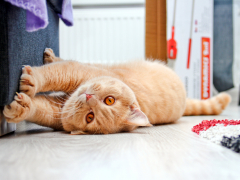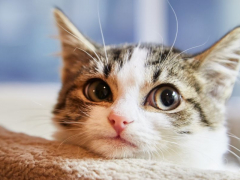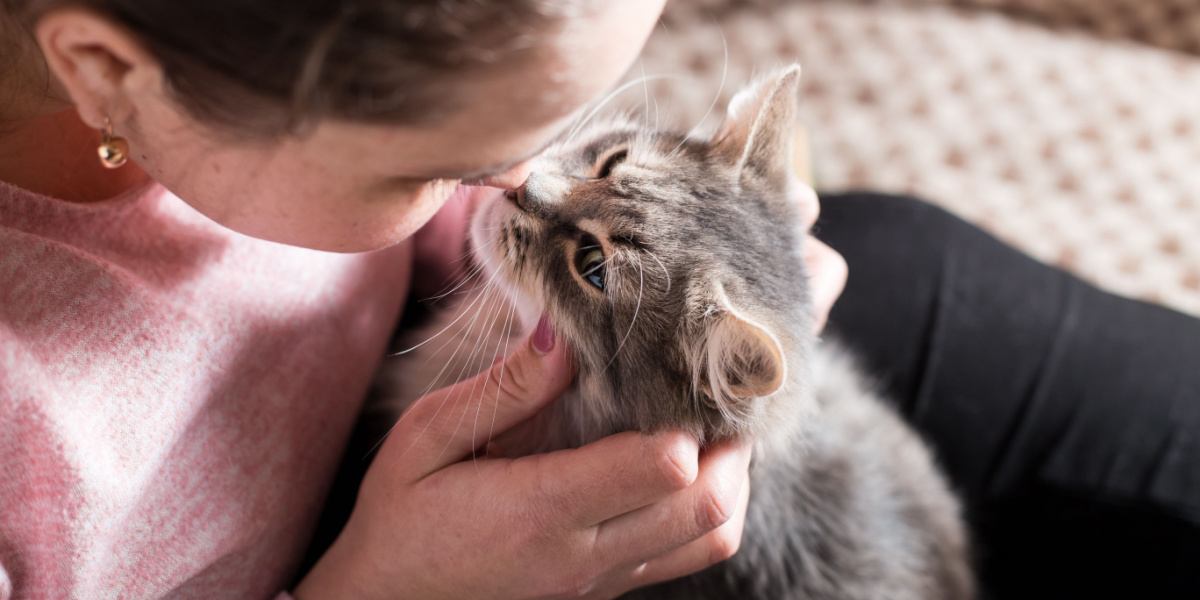
Cat communication is a fascinating subject, partially because it’s so different from human communication. Despite the domestication process happening more than 10,000 years ago, many cat owners still struggle to figure out exactly what their feline pets are trying to tell them.
Quick Overview
Despite long domestication, cats retain many wild traits and methods of feline communication have not altered much.
Cats can communicate using body language and posture, vocalizations, scent, and touch.
Paying attention to subtle changes in your cat’s behavior and signals can help understand what they are trying to tell you about their needs and their moods.
We might not be able to “speak cat,” but there are still ways to interpret our cats’ meanings through body language, vocalizations, scent, and touch. Want to know the difference between cat vocalizations such as a meow and a chirp? Or what cats are doing by bunting their heads against us? Read on for an explanation of 10 ways that domestic cats communicate with us.
Also Read: 7 Common Cat Vocalizations And What They Mean
How Cats Communicate to Humans
Human interaction has tamed cats somewhat and accustomed them to our ways, and they certainly reap some benefits of domestication, such as plentiful food, protection from predators and adverse weather, and access to medical care. However, cats still retain many of the wild instincts seen in their ancestors—and these traits are particularly prevalent in feral cats.
Feline communication has retained many characteristics of those early cats, with a reliance on body language and posture, scent-marking, and vocalization. Cats also have a long history of using pheromones to leave messages for themselves and other cats.
Also Read: How Do Cats Mark Their Territory?
10 Ways Cats Use Body Language for Communication and Expression
Let’s start our 10 cat communication strategies by looking at body language.
1. Posture
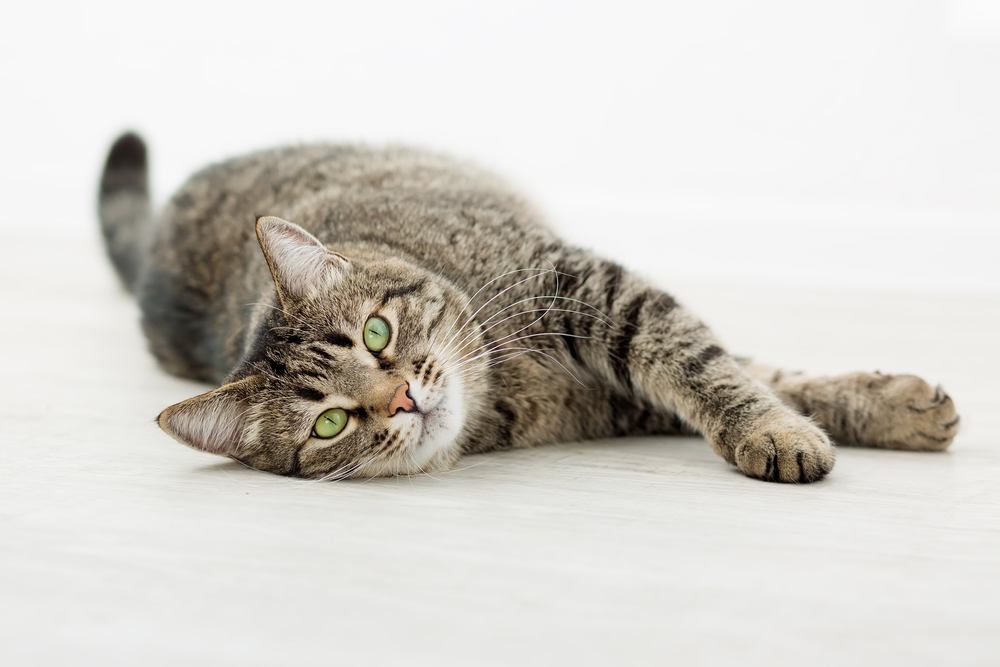
If your cat is stretched out, with their belly visible, they are feeling very relaxed.
A quick glance at a cat can already give a lot of clues as to what they are trying to tell you. A crouched, hunched cat is letting you know they are anxious or defensive. Stretching, rolling, and lying on their back indicate much more relaxation and contentment.
Also Read: 10 Proven Ways To Show Your Cat You Love Her
2. Tail Position
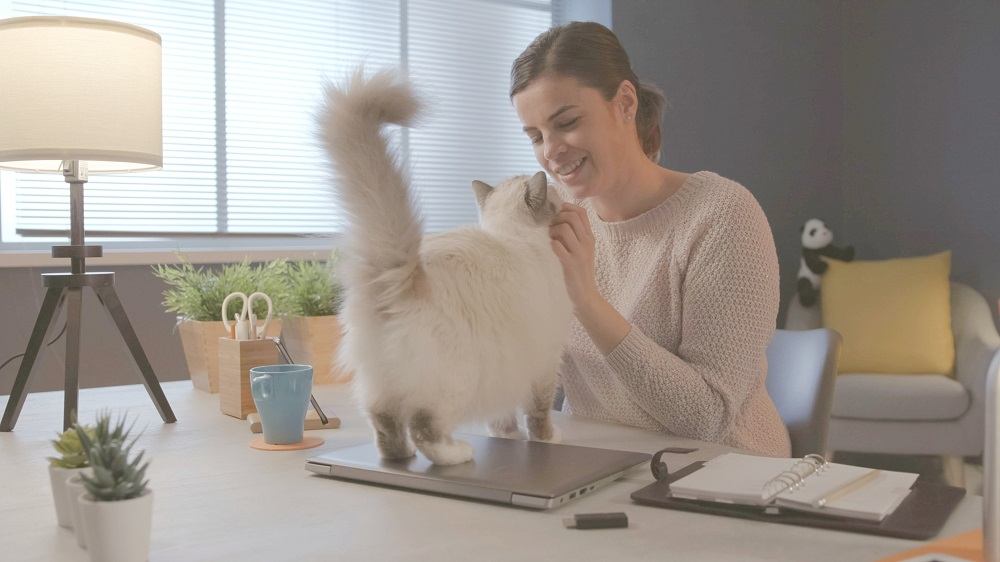
A tail held straight up with a curve at the tip like a question mark is in a playful mood.
It might surprise you to know that you can learn a lot from simply watching your cat’s tail. Cats can display a friendly greeting by approaching you with their tail straight up (bonus points if it’s quivering!), or indicate curiosity with a half-raised tail.
In contrast, beware of the lashing, puffed-up tail. A cat that is fearful or defensive might tuck their tail between their hindlimbs, often paired with a cowering posture.
Also Read: What Your Cat’s Tail Can Tell You
3. Facial Expression
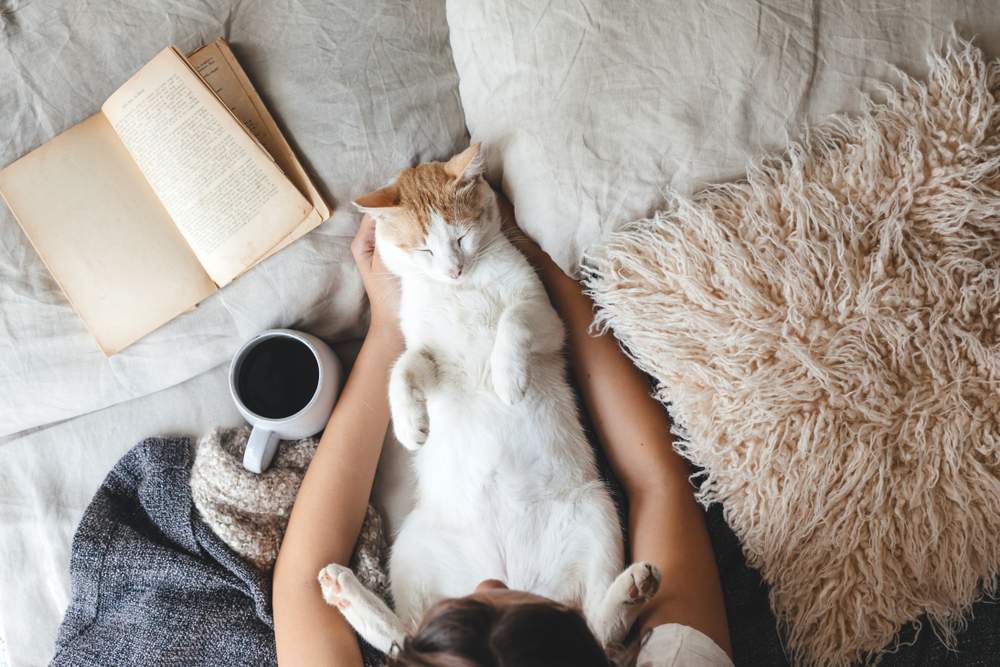
Take a look at the position of your cat’s ears, whiskers, and eyes to figure out how they’re feeling.
Cat lovers will know that a cat’s expression can reveal their inner feelings. Check out your cat’s ears, whiskers, and eyes to gauge their mood. Flattened ears against the head are a sign of fear, whereas ears held erect are alert. Beware of ears rotated outward—this can be a sign of aggression. Likewise, whiskers held fanned out and stiff can be a signal that your cat’s mood is not entirely agreeable.
Eye contact and pupil size are both used as subtle communication signals in felines. Does your cat ever stare at you while giving a long, slow blink? Studies have shown that it’s a cat equivalent of saying “I love you,” so feel the warm fuzzies! Direct, unblinking eye contact, however, alongside a tense body posture, indicates a challenge, and potential aggression.
Also Read: 10 Proven Ways To Show Your Cat You Love Her
Vocalizations
As humans, we are obviously familiar with vocal communication, as it is our main method of indicating our feelings, our needs, and our points of view to our peers. But can we learn to speak cat? Here are some common cat sounds to look out for.
4. Meow
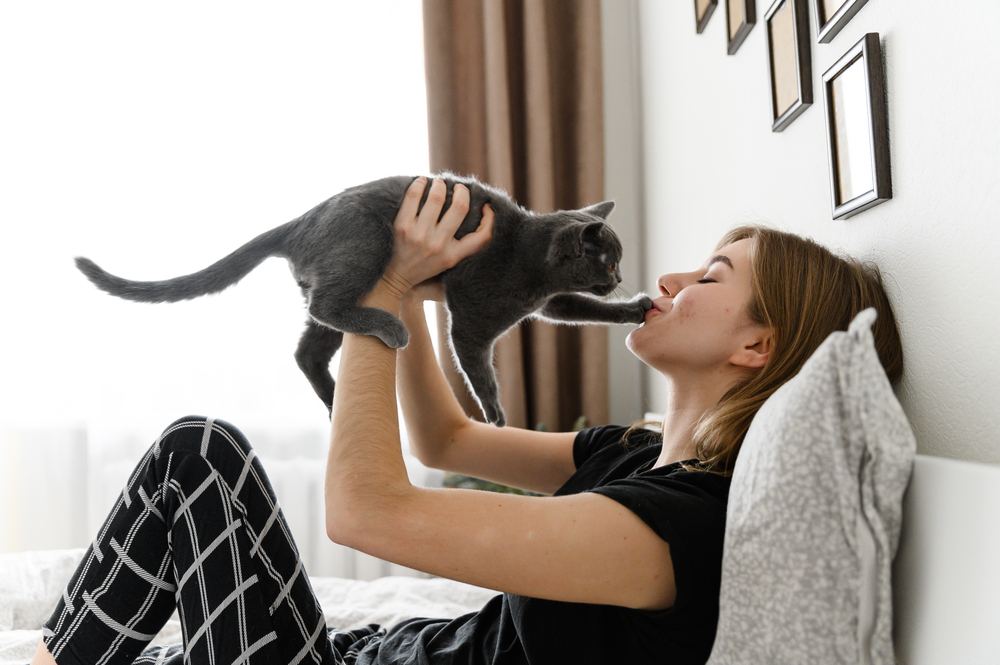
Adult cats only meow at humans, never other cats, but kittens will meow at their mother.
Studies have found that cats meow at their owners, but not at each other—it is a very human-centric sound. Kittens meow at their mothers, but adult cats don’t meow at each other. The meow is often used as a greeting, or when the cat wants something such as food or attention.
Also Read: 10 Reasons Your Cat Won’t Stop Meowing At Night
5. Purr and Trill

Although cats sometimes purr when they are in pain, this vocalization usually means a cat is feeling content.
Cats mostly purr when they are content and happy. They also use sounds such as purring, trilling, or chirruping as a greeting to a bonded person.
Also Read: Cat Chirping: What Is It And What Does It Mean?
6. Hissing and Yowling
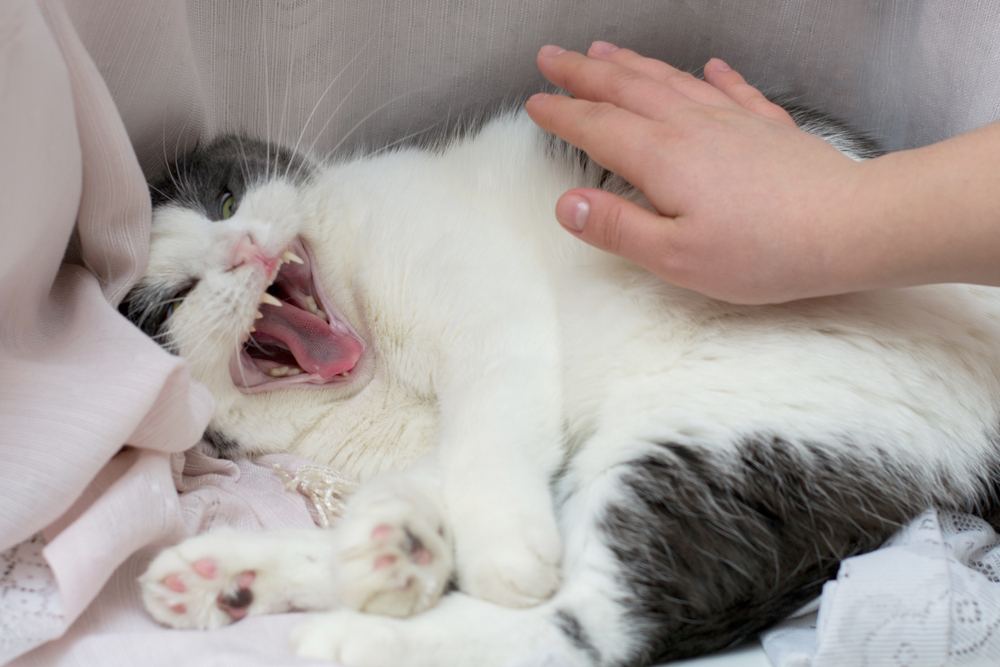
Always heed the sound of a growl or hiss by giving your cat some space.
Cats can also display more negative emotions via their vocalizations. Hissing and growling both indicate fear or anger and can be precursors to physical aggression. Yowling can also indicate aggression and is also used by both male and female cats around mating encounters.
Also Read: Petting Aggression In Cats: What It Is & How To Stop It
Scent
A cat’s olfactory sense is far superior to our own and can play a complex role in animal behavior.
7. Pheromones
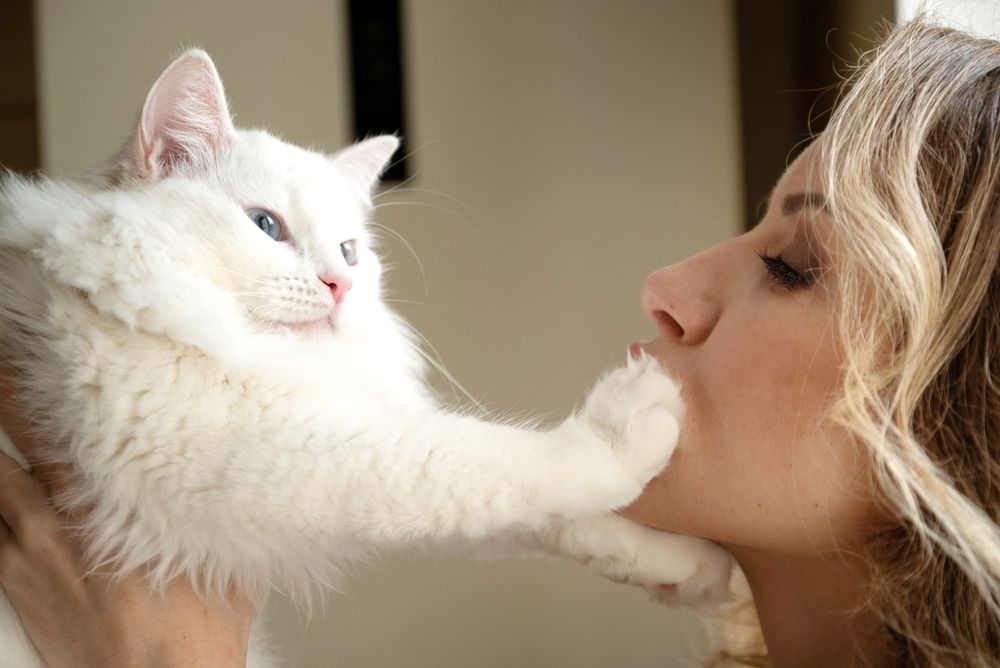
Cats have scent glands on their paws, chin, forehead, rear end, and tail.
Cats use pheromones—chemical messages released from scent glands—in myriad ways. Pheromones can indicate safety and contentment, territorial marking, potential sexual partners, and information about other cats.
Humans can’t detect pheromones, but they can still be used in human-cat communication. When your cat rubs their head and body along you, they are releasing pheromones, marking you as a bonded, trusted, and safe member of their social group. Synthetic pheromone diffusers or sprays can also be used to help settle cat behavior that is influenced by stress or anxiety.
Also Read: What Are Cat Pheromones And Do They Really Work?
8. Toileting
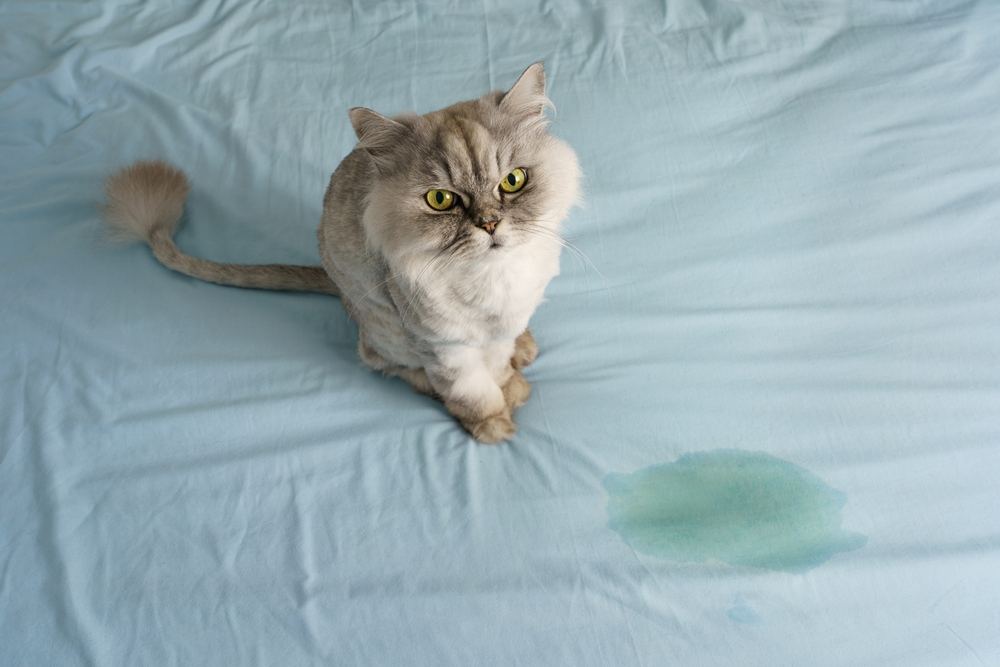
Cats use their urine to mark and communicate problems like territory issues.
Scent marking through urine spraying is also common in cats. If your cat is toileting outside the litter box, they might be trying to communicate a problem, such as a territorial dispute with another cat. Inappropriate urination can be a sign of stress in cats or be due to a medical issue. If you notice a change in toilet habits, always consult a veterinarian.
Also Read: 6 Common Reasons Why Cats Pee Outside The Litter Box
Tactile Communication
Some cats are much more cuddly than others, but there are various ways that a cat can communicate their love and trust for you via touch.
9. Sleeping On or Near You
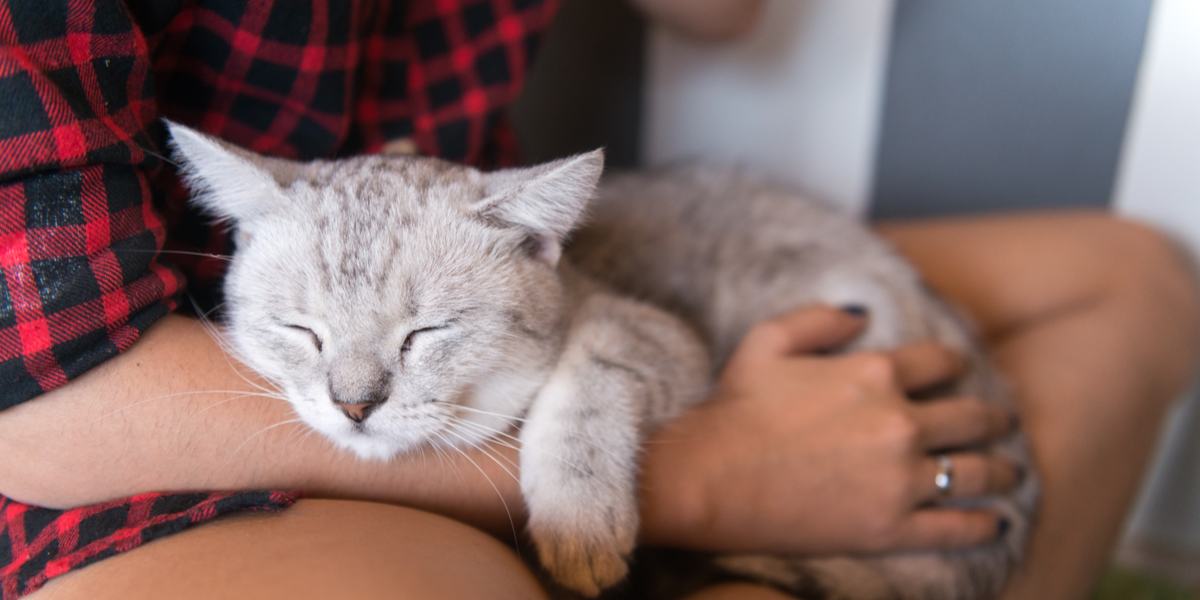
If you are your cat’s favorite sleeping buddy, know that they feel completely safe in your presence.
If your kitty likes to snooze on your lap or sleep on the bed with you at night, they’re indicating love and trust. Cats are vulnerable when they sleep, so they seek out a place of safety and security. Being physically close to you also helps with scent transfer, an important way in which cats mark their loved ones.
Also Read: 10 Signs Your Cat Really Does Trust You
10. Grooming
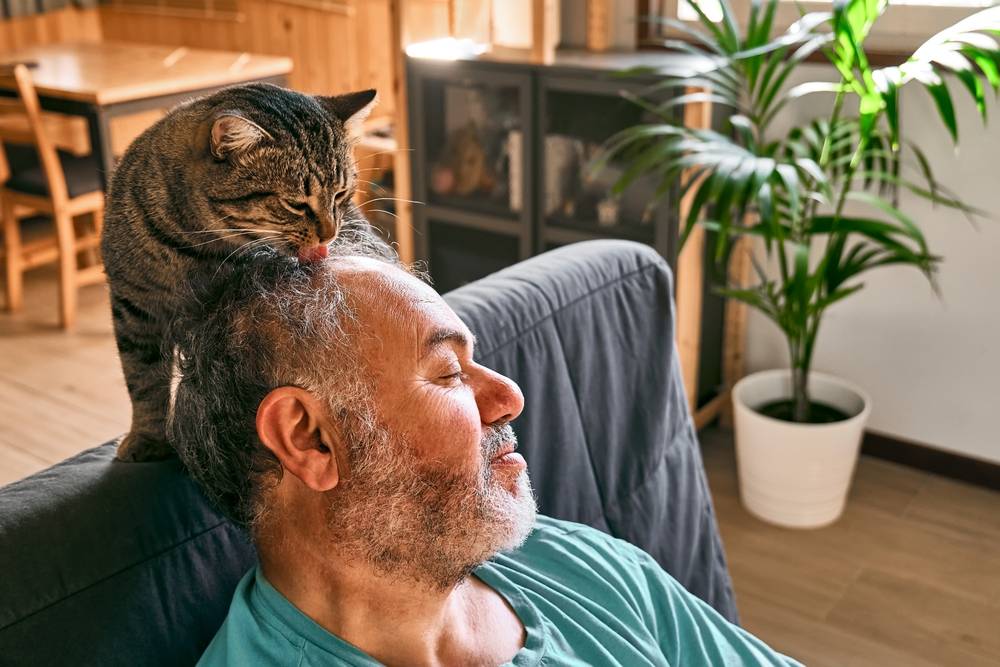
Social grooming between cats is known as allogrooming, and they do this to trusted humans, too.
Cats in the same social group will often groom each other. If your cat tries to groom you or purrs away happily when you stroke or brush them, this is a great bonding experience and a way that they communicate your inclusion in their social circle.
Also Read: My Cat Is Not Grooming Themself: When To Worry
Cat Communications: A Summary
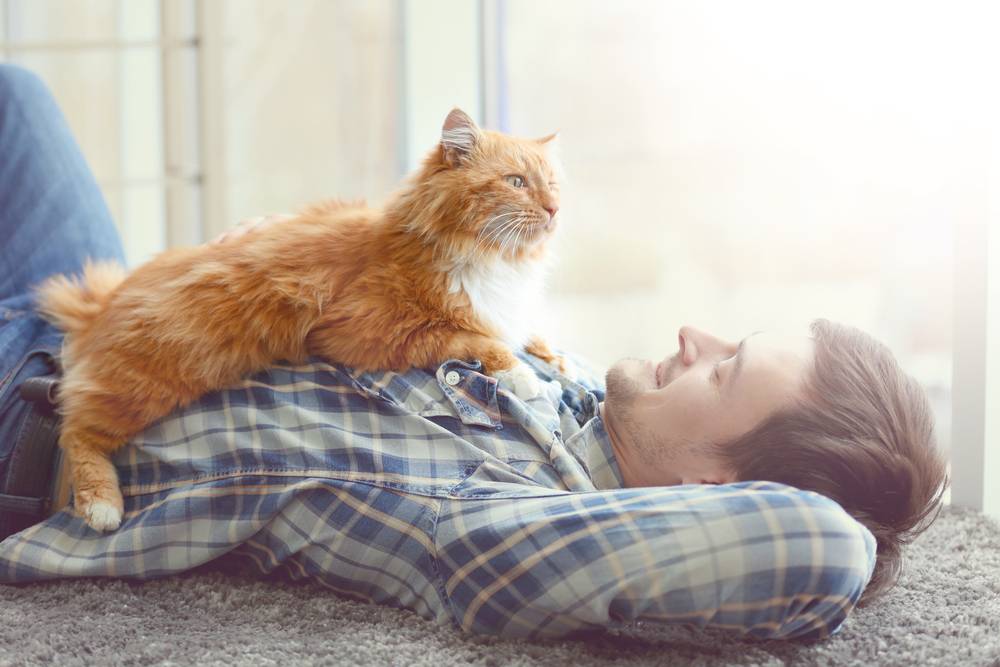
Knowing how your cat “speaks” can open up a new world of communication between you both.
Cats might not be able to talk using human language, but they can certainly communicate their emotions, wants, and needs to us—if only we pay attention! It can be enlightening to watch out for subtle signs that our cats give us through their body language and posture, their behaviors, vocalizations, and use of scent and touch. Give it a try—learning to speak cat might be easier than you think!
Also Read: 5 Ways To Build A Stronger Bond With Your Cat
Frequently Asked Questions
How does my cat communicate with me?
Cats often meow at owners to greet them or ask for something. They might chirp or trill in greeting, and purr when content. Cats also use body language to express emotion, and a slow blink is their equivalent of "I love you." Cats use scent marking in communication—when they rub themselves against you or bunt their head on you they are marking you as friendly and safe.
How do I tell my cat I love them?
Hold gentle eye contact with your cat and do some long, slow blinks—this is a sign of affection in cats. If your cat likes physical affection, use plenty of stroking and cuddling to enhance your bond, and this also transfers scents that help your cat mark you as someone trusted, friendly, and safe.
How do cats say hello?
Cats will often greet owners with a friendly meow, trill or chirruping noise. They might approach with trusting body language including an upright, quivering tail. Cats often rub their heads against bonded humans—this transfers scent pheromones, which mark the person as friendly and safe.



